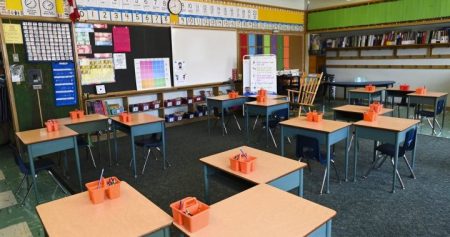The Montreal Canadiens faced a pivotal moment in their season with a critical five-game home stand, the success of which would determine their chances for a playoff surge. In their latest game against the New York Islanders at the Bell Centre, the Canadiens achieved a much-needed victory, winning 2-1 in overtime thanks to a crucial goal by Nick Suzuki, who scored on his own rebound. A notable storyline from the match was the return of Patrik Laine after a long absence of 355 days, marking his debut as a Canadiens forward in the 25th game of the season. Laine’s presence had an immediate impact on the team’s performance, particularly energizing the second line, which had been struggling. With Laine alongside Kirby Dach and Juraj Slafkovsky, the second line finally demonstrated competitive potential, marking a substantial improvement in their performance.
Laine’s arrival transformed the dynamic of the second line, showing that a great top-six does not necessarily require six exceptional players but rather two proficient trios functioning well together. Laine’s powerful shot added a new dimension to the power play, as teams could no longer focus solely on Cole Caufield. This newfound versatility threatened opposing penalty kill units, allowing the Canadiens to create space and opportunities for scoring. The first power play unit, now featuring Laine, Caufield, and others, quickly demonstrated their capability, achieving considerable zone time and finding success with a goal by Laine, who scored a stunning shot into the top corner. The atmosphere at the Bell Centre was electric, indicating how talent can shift the momentum in a game.
While Laine’s contributions seemed promising, it was apparent that the Canadiens’ top-six forwards still needed enhancement. Kirby Dach, despite being a first-round pick, did not appear to elevate his game to the level of Laine and Slafkovsky. The team continued to rely heavily on Alex Newhook, who did not measure up to the abilities of the top players. The successful addition of Ivan Demidov, who was considered one of the best prospects not yet in the NHL, could significantly bolster the team’s offensive power, allowing for greater flexibility in future line combinations. Furthermore, discussing potential line changes, Canadiens would benefit from either acquiring a solid center or grooming younger prospects to ensure that their second line meets the competitive standards necessary for a successful campaign.
The impact of Laine extended beyond the second line, even positively influencing the effectiveness of the first line, which includes Cole Caufield and Nick Suzuki. The distribution of defensive attention across both lines eased the pressure on top players and allowed them to operate more effectively without constant counterpressure from opposing defenders. This overall improvement, while still in progress, hinted at a brighter future for the Canadiens offensive structure. However, implementing a complete top-six is contingent on ensuring that all players work cohesively, indicating the need for continued roster adjustments as the season unfolds.
On the defensive side, while offensive efforts improved, several lapses in organization and execution were evident. Throughout the game, moments emerged where players failed to adequately defend their positions or clear the puck, leading to excessive time spent in their defensive zone. This was exemplified in shifts where opportunities to clear the puck went unused, resulting in further defensive pressure. Despite these shortcomings, goaltender Samuel Montembeault excelled, stopping 30 of 31 shots to preserve the victory. His performance underlined the vital role of strong goaltending even when the defensive structure falters.
Amidst ongoing developments and evaluations, the upcoming Four Nations tournament instead of the traditional All-Star Game offers players a unique platform to showcase their abilities. With Canada, the United States, Finland, and Sweden participating, no Canadiens players are expected to secure spots on the team, given their current standing in the league. Cole Caufield is arguably the most notable candidate, second in NHL goals, yet concerns over his size may hinder his selection. Sam Montembeault also has a chance to make the Canadian team, though he faces stiff competition from other goalies. Nick Suzuki’s performance may lend him an opportunity as well, though he too is part of a competitive lineup. As rosters are announced for the upcoming tournaments, the Canadiens will watch closely to see which players, if any, will add to their national representation and convene with their teammates to create necessary strategy for further success.










